Shearing and coal-mining, mussels to wine: The path that led this couple to owning a leading Marlborough winery
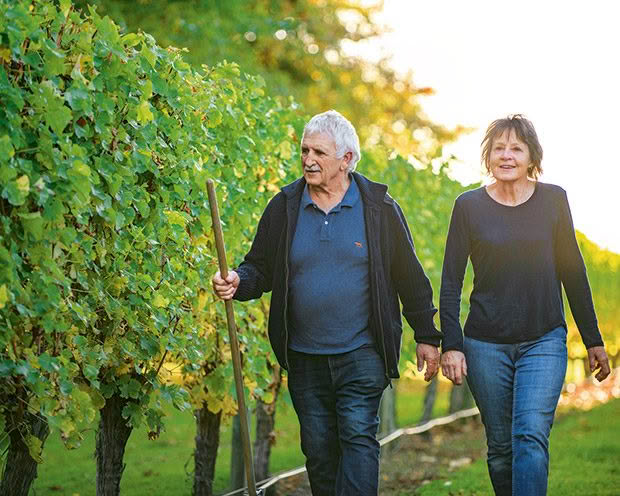
The Neylons initially planted their land in apples but realized it was also suitable for grapes after a few years.
The owners of Rapaura Springs Wines keep such a low profile that when a local newspaper wrote about their sponsorship of Garden Marlborough, people said: ‘We didn’t know you owned that business, we thought you just worked there.’
Words: Kate Coughlan Photos: Daniel Allen
A journey that began in the Southland township of Nightcaps has halted — for now — on the banks of a spring-fed stream near Blenheim. Here Margaret and John Neylon survey rolling lawns, towering trees and rows of grapes stretching away toward distant hills and wonder, every day, how they got this lucky.
Luck, in truth, has little to do with it. Hard work, entrepreneurial risk-taking and laughing at life’s unpredictable ways is the path they’ve taken together. In the Neylons’ world, there’s a lot to laugh over.
For example, John has a weakness for diggers. He must wrestle with “Margie, the Minister of Finance” to loosen cheque book control for just one more digger purchase. “It requires courtship,” he says. He currently has four diggers — proud proof of his romantic prowess.
“I’ve softened in recent years, so the courtship is not so intense for him to get a new digger,” says Margaret. “But I’m still known as The Handbrake.”
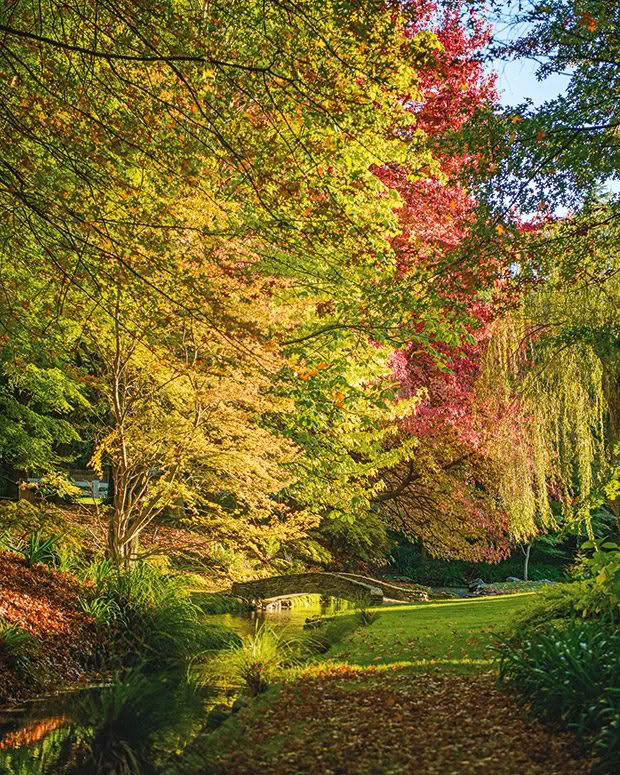
Every year, when John asked Margaret what she wanted for Christmas, she’d say: “A bridge.” After years of tumbles (sometimes with her wheelbarrow) from the plank crossing and into the creek, she got her bridge. She had to help build it, naturally. “It took us ages. We started with building the boxing, then poured reinforced concrete, and finally, the schist, which came from Alexandra. “It is my pride and joy.”
“We definitely wouldn’t be where we are today if Margie hadn’t taken control of the finances,” says John, giving her just the opening she needs on the topic of the latest digger acquisition. “That last digger was promised here in my garden the day it was delivered, and I’m yet to see it,” she says. She had plans — big plans — for that new digger, involving a massive pile of tree mulch. “I’ll never manage to move that mulch myself, John.”
Put the money on Margaret getting it done, one way or another. Not long after the Neylons moved into the split-schist home they built in 1986, she decided a fence was in the wrong place. John was in Japan selling green-lipped mussels, so she did the job herself. “I’d seen John take out fences, so I knew you needed to snig a chain round the front-end bucket of the tractor to the fence post, then yank it out. Well, I got all the posts out okay, but could I put them back in the new spot? Not straight — not good enough. I had to wait till he came home.”
The many houses the Neylons called home before this tranquil spot, and the journey that took them north first to Tīmaru and then Marlborough provokes a lot of laughter and tale-telling.
John started working life at 15 in the coal mine at Ohai. His first day, pushing coal boxes into the mine by hand, came precisely one week after his headmaster made a surprise evening appearance at the Neylon family home. He had come to tell John’s father, in certain and explicit terms, just what John was good for — and it wasn’t academia. A job down the mine would suit the young nuisance nicely.
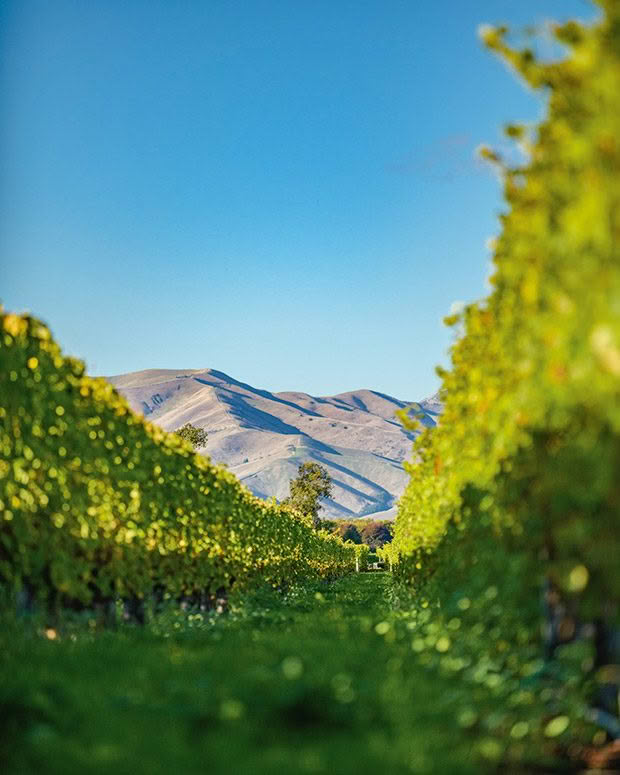
Sauvignon blanc grapevines, planted in 2005, surround the Neylon property and seem to stretch to the distant Wither Hills. The grapes are used for the Rapaura Springs and Summerhouse brands. The first Rapaura Springs vintage was in 2007 when both John and Margaret were hands-on at harvest. These days, Rapaura Springs is the second-biggest seller (of wine) in Australia’s Coles supermarket chain.
Margaret, also born in Nightcaps, grew up in nearby Winton, was educated at St Philomena’s in Dunedin and started work at the ANZ in Invercargill. By the time they met — at a mutual friend’s housewarming in Winton — John had moved from coal mining to better-paying shearing. He had also qualified as a chippie, supplementing his income with shifts in the casings department at the freezing works. The newly married couple’s first home in Winton wasn’t much of a house.
“When it snowed, the snow came in the top window and landed on the foot of our bed,” says John. “That was the $5 a week rental,” recalls Margaret.
Another home — much later and in another province — was labeled the Triple Yuck House by the unimpressed Neylon offspring. “That was the cheapest, oldest, rumptiest house in Blenheim,” Margaret says. “I had to get a builder to put up a fence to hide it from the street.”
John’s father, a straight-talking Nightcaps coal miner, came for a family holiday at the Triple Yuck House. He walked around the old property owned by the Public Trust, which no one else had wanted to buy, looked at the cocksfoot grass up to the windows and was silent for several minutes. Then he turned to Margaret and said: “Do you know what I’d do Margaret if I were you? I’d divorce the bastard. Taking you out of your new home and putting you in this hovel.”
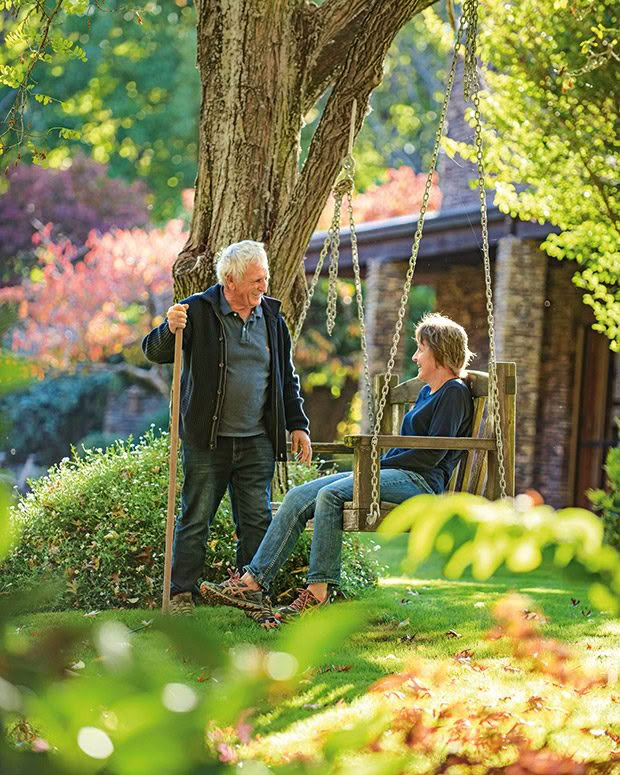
Margaret and John Neylon had to have a swing. “We spent a lot of time in Pennsylvania when our kids were cycle racing and noticed how the teenagers would hang out on their porch swings every night,” says Margaret. When she and John saw a roadside sign for Willow Creek Swings near Masterton, they knew it was meant to be. Now their granddaughters (4, 7 and 10) are the swing’s most regular users.
“You know,” says Margaret, “they were the good days. It was hard. But I tell you what, we were happy.”
“We knew nothing different,” says John.
John and Margaret had known the joys of a new family home. Immediately before the Triple Yuk House episode, they’d moved into a just-built home on the Wither Hills overlooking Blenheim with their son and daughter, Brendon and Shayne, both internationally successful junior world cyclists.
Unfortunately, this happy move coincided with the Development Finance Corporation or DFC (charged by the government of the day with stimulating regional development) reneging on promised financial support for a mussel-processing plant John had designed and was building in Blenheim.
“That DFC bombshell was a bloody nightmare. We had a mussel factory, almost complete, and no money to pay the builders. Margaret had never been too happy about us building the mussel factory…
“…No, of course not,” she interjects, “because you had me out there in the cold helping you to build it.”
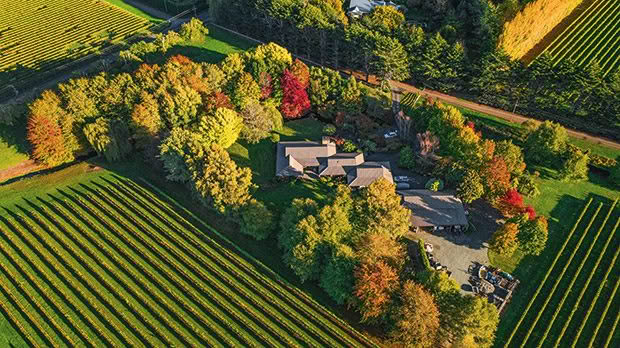
Apparently, a report had gone to the cabinet stating that the Marlborough Sounds mussel industry would not survive. The government pulled all funding overnight. “Our bank didn’t want to know us. In fact, they said, “Shit, if the DFC [famous for funding preposterously optimistic projects] won’t touch you, we certainly won’t. We battled and scraped through by selling our new home, renovating the old one and making a few quid [for the business] that way.”
It is a matter of record that the mussel-processing factory was soon employing 100 people and continues to do so, and that the mussel industry remains one of Marlborough’s most lucrative.
“My kids grew up on building sites,” says Margaret, who was involved in nearly all the Neylon construction sites. “They learned good values, as well as how to drive tractors and trucks and do all sorts of things about which I never even knew. It was a simple life.”
“Compared with what it is today,” says John. “Anyway, Margie played the long game with me.”
“Oh God,” she says with a roll of her eyes. “Neylons are good storytellers, and now I hear something new.”
“When I say the long game,” explains John, “she gradually pulled me back into line. Meeting Margie was the best thing that ever happened to me. Without her, I was heading down the path of becoming a useless boozy yob.
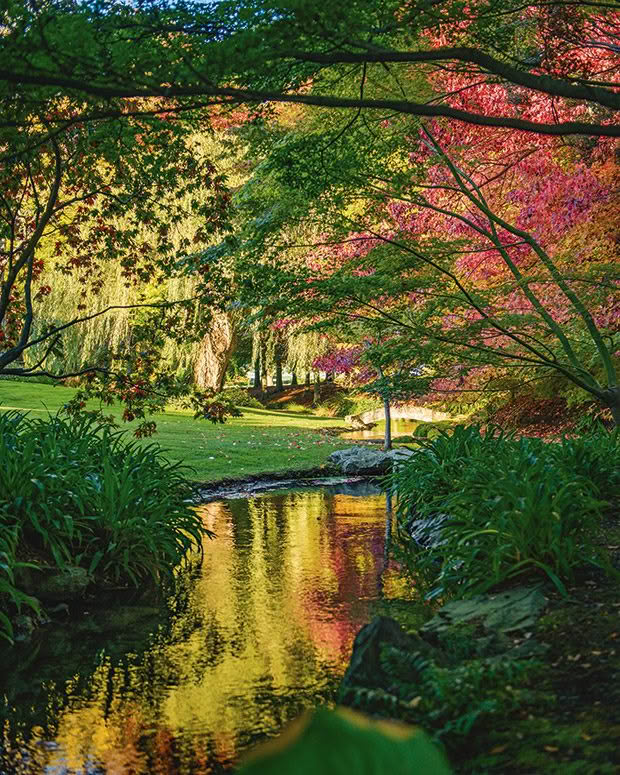
Initially, Margaret planted her garden in natives. “There were gazillions of them, and then one day I decided I didn’t like them. The thing about natives is that they always look the same.” The longing for the autumn colours of her southern childhood grew too strong, so she pulled out all the plants and started again. “I missed the change — the rich colours we were used to living in Southland and holidaying in Central Otago.” The subsequent growth of the liquidambars, golden elms, willows and maples has astonished her — overwhelmed her almost. “Now, I am looking at having to cut some out; they’ve grown too fast and too big.”
“It is a truism that behind every successful man, there has to be one hell of a strong woman. And that is Margaret — she is the rock of this family and, without her, I’d have been a disaster. I love getting out there and being hands-on, but once a project is up and working, off I go to something new, and that’s where Margie comes in.
“With her banking career, I had to get her into the mussel factory to manage the admin, but she only came in kicking and bucking.”
“It is quite a battle looking after him,” she says. “We had to hide the cheque books as he’d grab any cheque book and go off to buy another toy. The girls in the office see John outside on his digger, and they say, ‘There goes John, playing in his sandpit.’ He was banished from the office.”
“I have total faith in her,” he says, “even though I am banned from the office.”
“That’s why I can never retire,” she says. “John creates all this and then leaves me with the work.”
There’s nothing John likes more than a new opportunity for the family team to do something together. Initially, it was house-building. “When the family comes along, and you have mouths to feed, you need a house in which to live. I was a chippie; I had done my time. So I thought, ‘We can build ourselves a house’, and that’s what we did. It was plain sailing for me because Margaret didn’t know anything about building, and she did everything I said.”
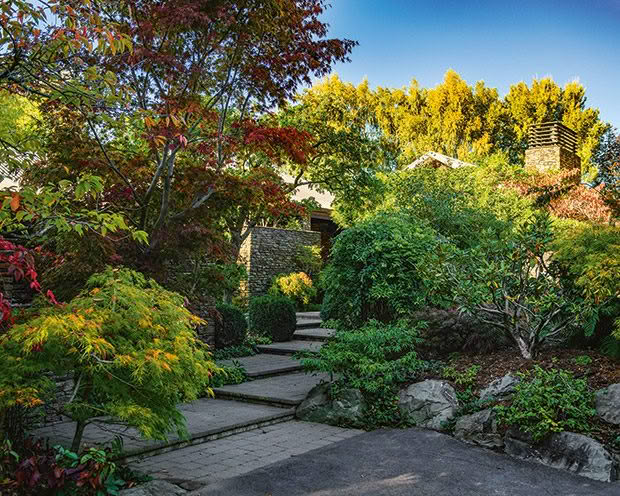
There was no stone on the property when they arrived, so John began trucking in loads of schist from Alexandra. The crane driver who came to position the rocks around the entrance and pool area took one look at John’s mountains of large stones and asked if the Flintstones lived there.
“I was on the end of the concrete mixer in those days,” says Margaret.
“She was my apprentice when we built that first one. Then someone came along and wanted to buy it, so we started another. I thought, ‘This girl is a hell of a quick learner.’ By the third house, Margie did all the planning, and I was on the end of the concrete mixer. She is a real quick learner, all right.”
“Oh John, you are full of rubbish. It was a hard slog, and we just got on with it.”
They left Southland in the late 1970s, arriving eventually in Marlborough for a partnership in the then-new green-lipped mussel industry with John’s brother Keith, yet another entrepreneurial Neylon (NZ Life & Leisure May/June 2010). The brothers were pioneers, not only developing mussel growing but designing and building one of the first mussel-processing plants in Marlborough. John also took on the marketing of the shellfish abroad.
“I quickly realized that everyone was getting into growing mussels without any processing or marketing facilities. I could see the industry was going to bust apart if we didn’t do something.” So, in typical Neylon fashion, John researched mussel processing. Then he and his brother developed the factory concept and set about building it with the promised support of the DFC. Enough said about the DFC.

Margaret and John are about to begin building another stone bridge across their stream but will make this one flat. “The arched one took us too long and was too hard to build.” The elegant iron gate, swinging on a schist wall, was made by local engineer John Aubry and has been hit so many times by trucks and large trailers that Margaret is impressed it still swings.
Mussels initially drew them to Marlborough, with a diversion into apple growing and packing (the most challenging industry of all, they say, and one which “nearly put me in my grave,” says John). But the wine industry has attracted their attention and kept all members of the Neylon family busy for the past 15 years.
There are a few family businesses. The Spring Creek Vintners winemaking facility, owned by the Neylon family in partnership with the Wiffen family, processes 12,000 tonnes of grapes a year. There are two wine labels, Rapaura Springs and Summerhouse (a premium brand), and 150 hectares of grape growing in Rapaura and Dillons Point, south of Blenheim in the Blind River area.
The naming rights sponsorship of the most successful event in the district (Rapaura Springs Garden Marlborough) was John’s surprise for Margaret four years ago. She’d been a volunteer for the famously popular festival since its launch 28 years earlier.
“Every year, I’d come home fizzing with excitement and talking 90 to the dozen, telling John all about it. He’d see me on a roll, non-stop talking about all these lovely gardens and cool people.”
So, John being John, quietly asked a committee member what it took to become the naming rights sponsor. His timing was spot-on — the committee was looking for a new sponsor. “Margaret loves gardening and loves Garden Marlborough, and we like to give something back to the district, so it is perfect for us.”
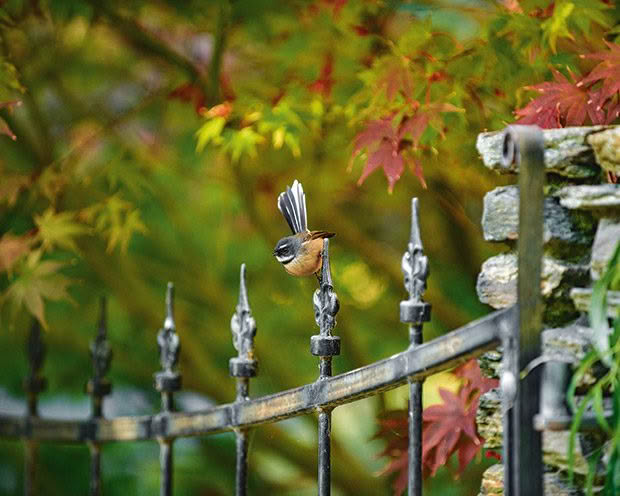
Margaret couldn’t believe it when John told her that her favourite event of the year was about to become named the Rapaura Springs Garden Marlborough, after their wine brand.
“I never prompted him, and truly, I was a bit shocked. We went along and met everyone. We like to provide the committee with what they need. I take my hat off to them — all volunteers — for being able to pull together an incredible event and keep it going for years.”
And it amused the couple that people they’ve known for years learned through a newspaper article about their sponsorship that the Neylon family owns the winery and wine brands rather than merely working there. A tiny bit of both Margaret and John wish that information hadn’t gotten out but — there you go — it is all for the good of the district.
“We can’t believe our luck to live in such an environment; it’s like a dream come true.”
COMMUNITY GROWN
In the 28 years since a handful of garden-mad Marlborough folk dreamt up a way to celebrate local gardens and bring other garden-crazy people together, Garden Marlborough has grown to a four-day festival packed with activities, tours and workshops.
It attracts visitors from throughout New Zealand and — in pre-pandemic days — from across the Tasman. Two of those pioneers — Carolyn Ferraby (Barewood) and Richard Macfarlane (Winterhome, designed by Richard’s late wife Sue) — still open their magnificent properties to join the dozens in the festival line-up. From small and perfectly created suburban gardens in the heart of Blenheim to sprawling woodland retreats, there is a significant array of garden styles, sizes and themes.
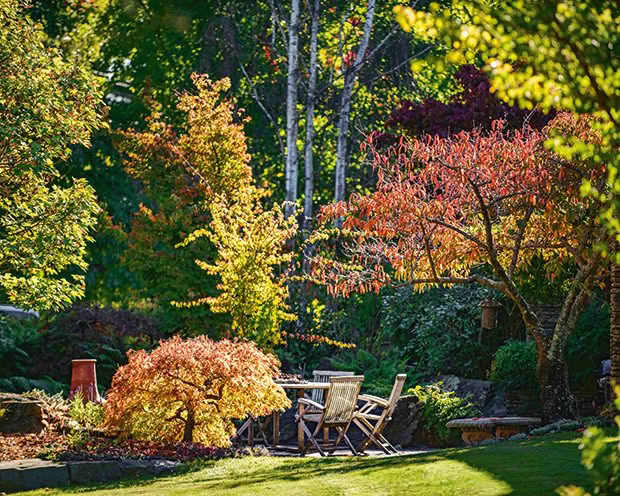
After three years of wrangling with the local council about pool fencing and a judge telling John he didn’t want to see him in court (about the pool) again, Margaret yielded. The pool stood empty for several years before John rumbled in with trucks of rocks and soil to fill it. The original design of a nature-inspired pool, surrounded by large rocks and trees, would have been spoilt by the required fencing. It is now a sheltered seating and eating area where John displays a meaningful tableau of a pair of coal shovels leaning against a wine barrel. “From a coal miner to a winemaker.” Even though he doesn’t like or drink wine, he’s delighted with the journey.
Visitors are transported around the district for half- or full-day tours, and workshops are available during the day and on most evenings, culminating in the glamorous garden party where new friends enjoy each others’ company over wines and bid for artworks at the auction.
The art auction and event raffles raise money for community projects to encourage gardening, promote its benefits and enhance Marlborough’s physical environment. Recent projects include:
▷ Creating a boardwalk in local lagoon restoration project Te Whānau Hou Grovetown.
▷ Horticultural scholarships to Lincoln University.
▷ Helping to establish an edible garden and shade trees in several local schools.
▷ Donating and planting trees in public spaces.
▷ Gifting outdoor artwork to Wairau Hospital and Pollard Park.
▷ Developing a garden at Marlborough Hospice.
Rapaura Springs Garden Marlborough, 4 to 7 November, 2021. Book at gardenmarlborough.co.nz
MORE HERE
Love this story? Subscribe now!
 This article first appeared in NZ Life & Leisure Magazine.
This article first appeared in NZ Life & Leisure Magazine.
